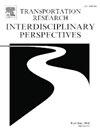Enhancing urban resilience: Managing flood-induced disruptions in road networks
IF 3.9
Q2 TRANSPORTATION
Transportation Research Interdisciplinary Perspectives
Pub Date : 2025-03-24
DOI:10.1016/j.trip.2025.101383
引用次数: 0
Abstract
Emergency preparedness is essential to ensure public safety during disasters. Effective emergency planning requires robust response scenarios, especially for critical infrastructure like road networks. This paper aims to enhance the resilience of road infrastructures and ensure reliable network availability under adverse conditions, such as extreme weather events. By focusing on flood-induced disruptions, we present a novel, data-driven approach that combines a dynamic microsimulation model developed in Dynasim with real-time traffic data from the TomTom portal. Conducted in Palermo, Italy, this study assesses the impacts of different emergency management strategies on urban mobility, providing insights into congestion, rerouting dynamics, and operational limitations at critical intersections during flood events. The study’s results guide the development of a comprehensive emergency mobility plan with adaptive traffic management strategies, which can be used by public safety agencies to implement effective traffic control measures in real-time. This approach not only addresses immediate traffic management challenges during flood events but also informs long-term policy recommendations for enhancing infrastructure resilience, integrating sensor technology, and promoting community preparedness. The insights presented contribute to a scalable framework for bolstering the resilience of urban road networks against climate-induced disruptions.
增强城市抵御能力:管理洪水导致的道路网络中断
应急准备对于确保灾害期间的公共安全至关重要。有效的应急规划需要强大的响应方案,特别是对于道路网络等关键基础设施。本文旨在增强道路基础设施的弹性,并确保在极端天气事件等不利条件下可靠的网络可用性。通过关注洪水引起的中断,我们提出了一种新颖的数据驱动方法,该方法将动态微模拟模型与来自TomTom门户网站的实时交通数据相结合。该研究在意大利巴勒莫进行,评估了不同应急管理策略对城市交通的影响,为洪水事件期间关键十字路口的拥堵、改道动态和运营限制提供了见解。该研究的结果指导了具有适应性交通管理策略的综合应急机动计划的制定,公共安全机构可以使用该计划实时实施有效的交通控制措施。这种方法不仅解决了洪水期间交通管理面临的直接挑战,还为加强基础设施恢复能力、整合传感器技术和促进社区准备提供了长期政策建议。提出的见解有助于建立一个可扩展的框架,以增强城市道路网络对气候引起的中断的抵御能力。
本文章由计算机程序翻译,如有差异,请以英文原文为准。
求助全文
约1分钟内获得全文
求助全文
来源期刊

Transportation Research Interdisciplinary Perspectives
Engineering-Automotive Engineering
CiteScore
12.90
自引率
0.00%
发文量
185
审稿时长
22 weeks
 求助内容:
求助内容: 应助结果提醒方式:
应助结果提醒方式:


